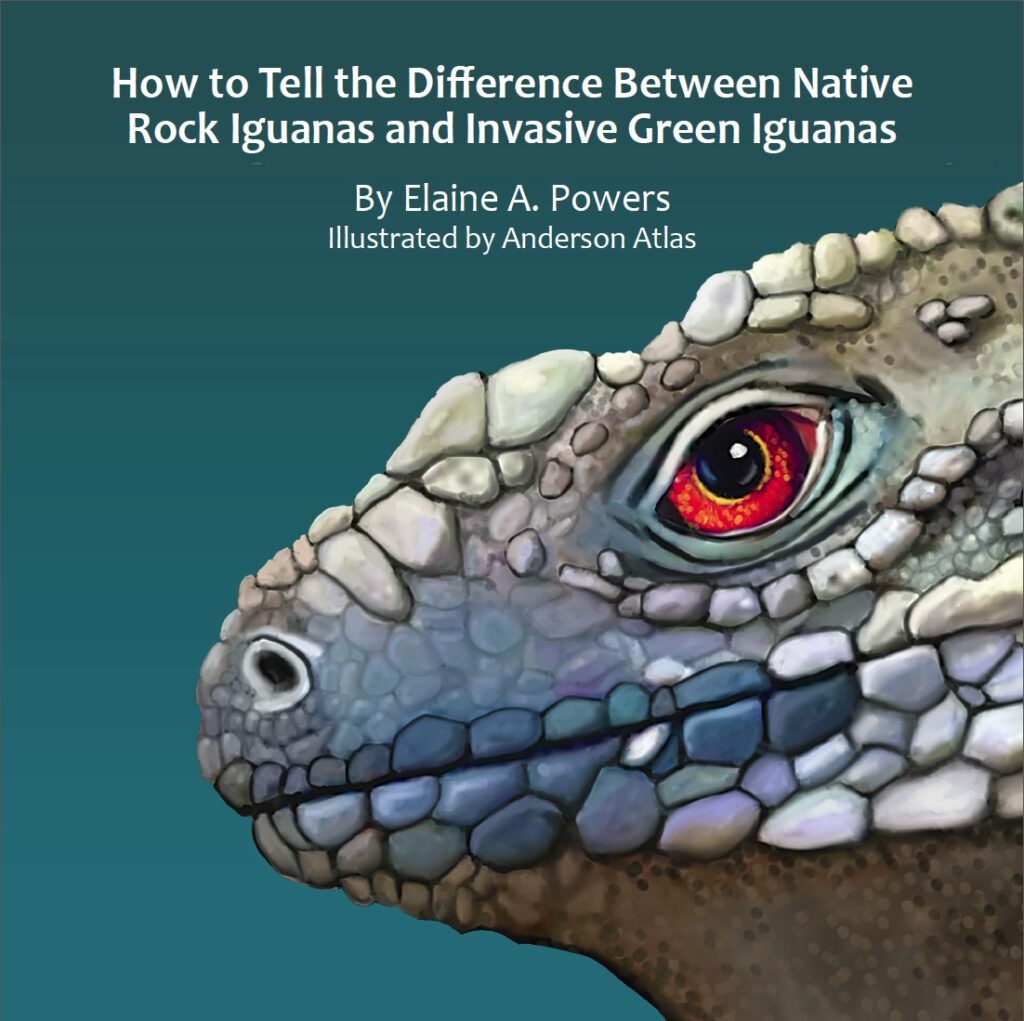Iguanas are an important part of my life. They are featured in the children’s book I wrote called The Dragon of Nani Cave, which is an adventure tale starring curly-tail lizards ,Gene and Bony, who live on Cayman Brac. I weave the science of the island into the story, because science can be fun!
I am also the author of the book Silent Rocks, which is for all ages, and is about how to save the endangered Rock Iguana of Cayman Brac.
Most iguanas are found in the Americas and on Caribbean islands. They are grouped into three types: iguanas like the common green iguana, rock iguanas and spiny-tail iguanas. Each has evolved to thrive in their native environment. Unfortunately, through international commerce, the green iguana, Iguana iguana, has been introduced into ecosystems where they don’t belong.
Have you ever wondered how to tell iguanas apart? Being able to accurately identify iguana species is important to telling the difference between native iguanas and the invasive green iguanas. I have nothing against green iguanas. I’ve known many through the years as pets and when I operated an iguana rescue. Unfortunately, they are damaging the ecosystems and out-competing the native species.
Green iguanas live in an environment with many predators. So, greens lay many eggs and adapt to many foods. They have that in common with rock iguanas, who are also opportunistic eaters. (Sadly, they’ll even eat human food.)
But back to the telling iguanas apart. There are now booklets that show the physical differences. Rock iguanas don’t have the gorgeous subtympanic scale–that’s the big scale under the ear–that the green iguanas have. My mother called it the ‘jewel.’ It is lovely, in many pretty colors. No other iguanas have that scale. Greens also have little points on their dewlaps. A dewlap is the piece of skin under the chin. ( Oooh, that rhymes.) The greens have smooth, striped tails. Other iguanas have less striped tails. Rock iguanas have that nice ribbing along the tail, while spiny-tails have keeled scales on their tail giving them a rough appearance.
I wanted to produce an item that would aid people in correctly identifying iguanas, something that was convenient to carry and interesting to look at. I was asked to make the text rhyme because this helps in memorizing the facts. Anderson Atlas, John Binns and I have prepared these conveniently-sized booklets that people can carry around with them.

Check them out –they’re free. Please use the contact form on the Contact Page to request copies of these brochures for iguana identification.

